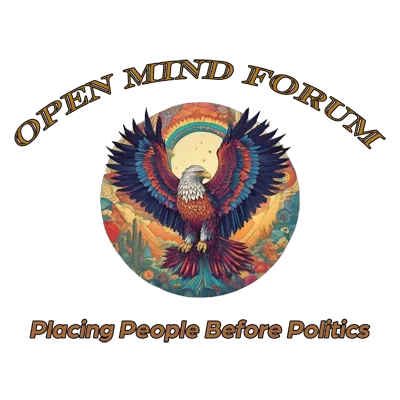An In-depth Analysis
Introduction: Defining Assimilation as Policy
Assimilation as Policy is the overarching theme of this post. Assimilation policies have long aimed to erase minority cultural practices, forcing conformity to majority norms. In the United States, assimilation policy historically targeted Native Americans, immigrants, and immigrant and

religious communities like Jews and Muslims, through formalized institutions and social pressures. This essay examines the consequences of such policies and the subtle exclusion they engendered, fostering an identity crisis among minorities and creating lasting divides.
Forced Assimilation of Native American Children
Indian Residential Schools: Assimilation as Policy
In the 19th century, the U.S. government established Indian residential schools aimed at eradicating Native American culture. Young Native American children were removed from their families and placed in schools like the Carlisle Indian Industrial School. At Carlisle, children underwent a severe cultural transformation: their hair was cut, and they were required to speak English exclusively, foregoing their native languages. Many were physically punished for using their indigenous languages or practicing traditional customs (Adams, 1995). The trauma from these forced experiences has had generational impacts, contributing to cultural erasure and identity struggles that persist in Native American communities.
Christianization Efforts in Schools: Assimilation as Policy
Christianity played a dominant role in the cultural reeducation of Native Americans in these schools. Missionaries running these schools saw conversion as essential to assimilation, often making Christian beliefs a requirement. Catholic and Protestant organizations managed many of these institutions, introducing Bible readings and hymns into daily routines while prohibiting indigenous spiritual practices. As historian David Wallace Adams notes, this religious imposition was a form of “cultural genocide” aimed at creating “Americanized” Christians out of Native youth (Adams, 1995).
Assimilation of Immigrant Children in Public Schools
Assimilation as Policy: Language and Curriculum Restrictions in Urban Schools
In large urban centers, schools actively stripped immigrant children of their native languages by enforcing English-only policies. Curriculums promoted

Western literature, American history, and “American civics” while excluding immigrant stories. This focus made it difficult for immigrant children to relate to their heritage, as schools seldom acknowledged or celebrated their backgrounds (López, 2001). This process not only separated children from their cultural identities but also created divides between immigrant parents and their children, who became more “Americanized” with each school day.
Suppression of Cultural Traditions in School Programs: Assimilation as Policy
School policies actively discouraged cultural expression among immigrant children by forbidding traditional clothing, food, and celebrations. Italian, Irish, and Jewish children faced discrimination and were made to feel their backgrounds were inferior. Such rules sought to normalize only the appearance and behaviors deemed “American,” creating a pattern where students felt they had to abandon their roots to be accepted (Rodriguez, 1982). This policy fostered the development of children who grew up disconnected from their ancestral identities, leading to cultural erosion across generations.
The Jewish Experience: Assimilation through Reform Movements
Assimilation as Policy: The Transformation of Jewish Cultural and Religious Practice
For Jewish Americans, the pressure to assimilate meant transforming their religious practices. Reform Jewish congregations, especially in the early 20th century, sought to make Jewish customs align with American values. They abandoned traditional observances such as dietary restrictions and the wearing of head coverings in worship, emphasizing instead a universalist, less ritualistic approach. This watered-down version of Judaism stripped Jewish Americans of the depth of traditional practice, aiming to “Americanize” Jewish customs (Sarna, 1997).
Limited Education in Hebrew and Jewish Customs
In Reform Jewish Sunday schools, Hebrew instruction often focused only on rote memorization rather than comprehension. Students learned to “read” the language without understanding it, prioritizing ceremony over substance. This approach mirrored American public schools’ focus on superficial learning and suppressed the transmission of genuine cultural literacy, effectively disconnecting younger generations from authentic Jewish practices (Kraut, 1988). This diluted form of education transformed Jewish identity from a rich, complex tradition into a version more palatable to mainstream America.
Consequences of Assimilation Policies: Lasting Impacts
Generational Gaps and Identity Crisis
Assimilationist practices created rifts between immigrant parents and their Americanized children, generating a sense of loss within families. Children felt alienated from their heritage, leading to identity struggles that transcended generations. Scholars have found that such gaps contribute to mental health struggles in immigrant communities, with youths feeling caught between two worlds (Portes & Rumbaut, 2001). The resulting cultural divide fostered a sense of perpetual otherness, where fully assimilated minorities remained outsiders within the majority.
Cultural Erosion and Psychological Trauma
The imposition of majority culture over minority traditions leads to a legacy of trauma, which Native American and immigrant communities continue to face. Studies reveal that cultural disconnection results in diminished self-esteem and resilience in minority populations, who often feel they lack a firm identity (Gone, 2009). This trauma underscores the harmful consequences of policies that encourage minorities to discard their heritage, revealing the deeper costs of assimilation as a policy of exclusion and marginalization.
Conclusion: The Paradox of Assimilation
Assimilation policies present a complex paradox: while they ostensibly aimed to integrate minority populations, they fostered exclusion by reinforcing minority status and denying cultural authenticity. The forced absorption of American ideals left a profound sense of being incomplete in those subjected to the actions of those working to Americanize them, and yet, these teachers allowing acceptance into the majority only on conditional terms. One example sticks in my mind that if I let it could become a deep resentment for the cultural murder they felt was necessary. Long ago, I decided that if I carried that resentment I only hurt myself. Instead, I choose to forgive the bigots that served as my teachers for their hegemonic goals. What is harder to forgive is the consequences of their alleged concern for my difference. It is my hope that they are finally at peace.
But in retrospect, the consequences of assimilationist policies reveal a history of cultural suppression, reminding us that diversity should not require conformity. Perhaps the most important thing to take away from this piece is simply this…We Americans are all descended from immigrants. even the indigenous people are thought to have migrated to the Americas during the last ice age following the herds for hunting. For the majority to actively deny this truth is what sparks their assimilation playbook. Those of us who feel a deep loss because of those policies find ourselves still outsiders, a toxic condition that demonstrates the failure of such caustic experience.
One final thought is important to discuss. Slavoj Žižek remarks that assimilation as cultural violence demands exploration. He wonders, and I paraphrase here, if the truly assimilated discovers that he or she still do not completely belong, one might begin to think that as a general policy assimilation cannot be ethically justified. That we would be far better off as a species if we learned the value of the other by incorporating values and rituals not our own into the soup of a diverse society. I suggest that there is no other way to understand the Other save by learning about the culture and habits of the Other. How Levinasian as well.
Sources
Adams, D. W. (1995). Education for extinction: American Indians and the boarding school experience, 1875-1928. University Press of Kansas.
Gone, J. P. (2009). A community-based treatment for Native American historical trauma: Prospects for evidence-based practice. Journal of Consulting and Clinical Psychology, 77(4), 751–762. https://doi.org/10.1037/a0015390
Hershberg, E. (2004). Constructing the American Jewish identity: The paradox of assimilation. University of Chicago Press.
Kraut, B. R. (1988). How Reform Judaism evolved and the Americanization of Jewish life. New York University Press.
López, M. P. (2001). White public space and the construction of immigrants as other in the United States. Anthropological Quarterly, 74(3), 419–434. https://doi.org/10.1353/anq.2001.0034
Portes, A., & Rumbaut, R. G. (2001). Legacies: The story of the immigrant second generation. University of California Press.
Rodriguez, R. (1982). Hunger of memory: The education of Richard Rodriguez. Bantam.
Sarna, J. D. (1997). American Judaism: A history. Yale University Press.
Smith, A. (2005). Conquest: Sexual violence and American Indian genocide. South End Press.
Suggestions for Further Reading
- Adams, D. W. (1995). Education for Extinction: American Indians and the Boarding School Experience, 1875-1928. – A detailed account of Indian boarding schools and cultural assimilation efforts.
- López, M. P. (2001). White Public Space and the Construction of Immigrants as Other in the United States. – Analysis of assimilation policies in American public schools.
- Rodriguez, R. (1982). Hunger of Memory: The Education of Richard Rodriguez. – A memoir exploring the consequences of linguistic and cultural assimilation.
- Kraut, B. R. (1988). How Reform Judaism Evolved and the Americanization of Jewish Life. – Discusses the adaptation of Judaism in America.
- Portes, A., & Rumbaut, R. G. (2001). Legacies: The Story of the Immigrant Second Generation. – An exploration of immigrant adaptation and identity conflict.
- Gone, J. P. (2009). A Community-Based Treatment for Native American Historical Trauma: Prospects for Evidence-Based Practice. – Examines the psychological effects of historical trauma on Native communities.
- Sarna, J. D. (1997). American Judaism: A History. – Examines the evolution of Jewish identity and practices in American society.
- Smith, A. (2005). Conquest: Sexual Violence and American Indian Genocide. – Analysis of Native American cultural genocide through policy.
- Hershberg, E. (2004). Constructing the American Jewish Identity: The Paradox of Assimilation. – Discusses how American Jews navigated assimilation.
Disclaimer: The images and videos in this post are AI-generated creations, intended purely for illustrative and conceptual purposes. They are not real-life representations and should not be interpreted as such. Their sole purpose is to offer a visual means of exploring the topics discussed in this post.




